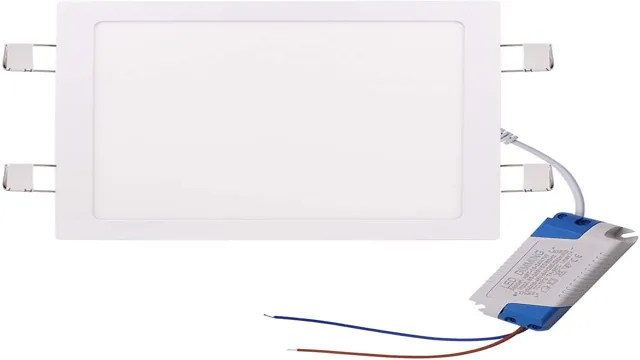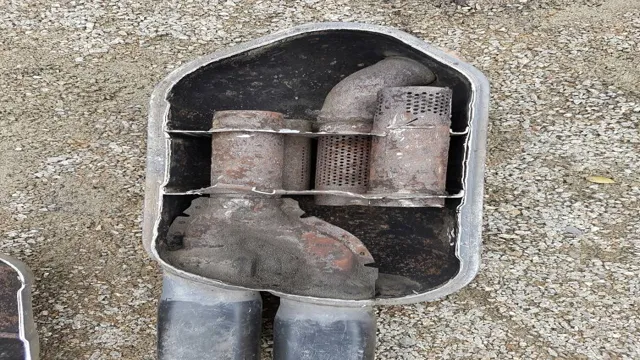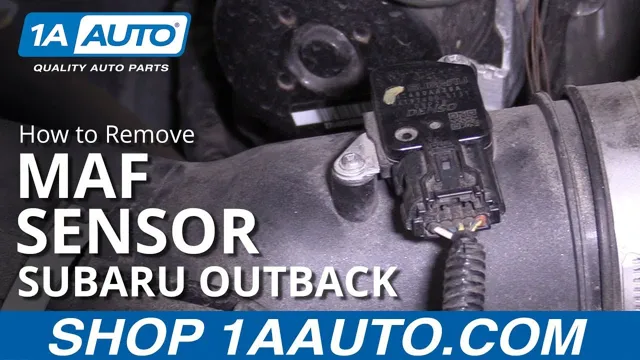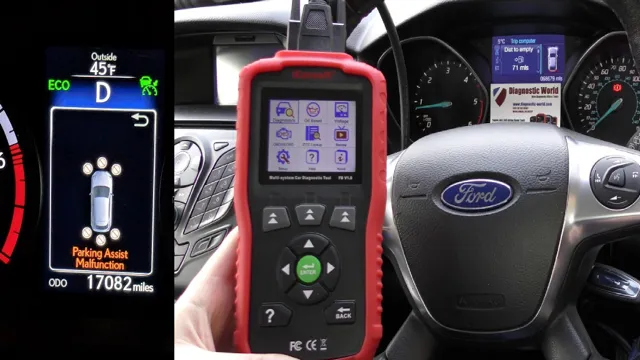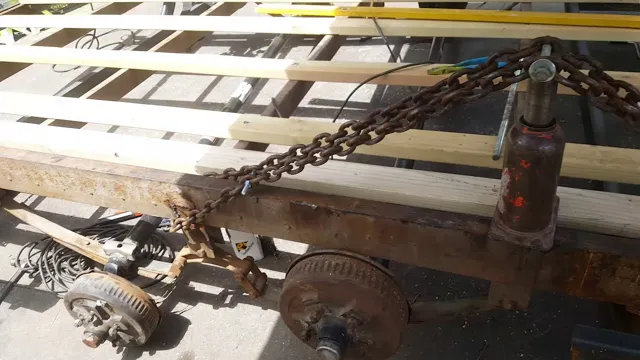Revive Your Vehicle: Foolproof Ways to Get Your Allison Transmission Out of Limp Mode
If you own a vehicle with an Allison transmission, there is a chance you may have experienced the dreaded limp mode. This can be a frustrating experience, especially if you rely on your vehicle for work. Limp mode is essentially a measure put in place by the transmission to protect itself from further damage.
When your Allison transmission detects a problem, it will put itself in limp mode to prevent further damage. But don’t worry, there are some steps you can take to fix this issue and get back on the road. In this post, we’ll take a look at how to fix Allison transmission limp mode, from identifying the issue to troubleshooting and solving the problem.
So, let’s dive in!
Understanding the issue
If your Allison transmission is stuck in limp mode, there could be a range of issues causing the problem. Limp mode is a safety feature that prevents your transmission from further damage when it detects a severe problem. The first step in getting your transmission out of limp mode is to diagnose the issue.
Check for any diagnostic codes, such as P0700 or P0847, and ensure that the transmission filter, fluid, and electrical connections are all in good condition. If the issue persists, it may be time to consult a professional mechanic who has experience with Allison transmissions. In conclusion, to get an Allison transmission out of limp mode, you must first understand the underlying cause and address it accordingly.
Causes of limp mode
Limp mode is an issue that many drivers face at some point in their vehicle ownership. This issue occurs when your car’s onboard computer detects a problem with one of its systems and automatically reduces engine power to prevent further damage. Some of the most common causes of limp mode include a faulty sensor, clogged fuel filter, transmission issues, or an electrical fault.
While limp mode can be frustrating, it’s essential to understand its purpose and not ignore the underlying problem. Continuing to drive your car in limp mode can cause significant damage to your engine, leading to costly repairs. The best course of action is to have your vehicle diagnosed by a trained mechanic to resolve the issue promptly.
By addressing the problem head-on, you can avoid any further complications and ensure your car runs smoothly.

Symptoms of limp mode
If you’ve ever experienced limp mode while driving, you know how frustrating it can be. Limp mode is a safety feature in modern vehicles that restricts power output when it detects a problem with the engine or transmission. The symptoms of limp mode can include reduced power, lower acceleration, and limited speed capabilities.
Some drivers may also notice warning lights illuminated on the dashboard, such as the check engine light. It’s crucial to understand the issue quickly and address it to prevent further damage to your car. Ignoring the problem or trying to drive through it could cause even more significant issues down the road, leading to costly repairs.
If you suspect your car is in limp mode, it’s best to have it diagnosed by a mechanic as soon as possible to prevent any further damage. So, if you experience any of these symptoms, don’t hesitate to take action and seek professional help to keep your car running smoothly.
Steps to fix Allison transmission limp mode
If your Allison transmission is stuck in limp mode, it can be frustrating and intimidating. But fear not – there are steps you can take to get your transmission out of this mode and back to operating smoothly. The first thing you should do is check the fluid levels and make sure they are at the correct level.
If the fluid levels are low, this could be causing the issue. Secondly, check for any fault codes and address them accordingly. You may need to replace or repair certain components.
Another factor to consider is the condition of the filters. If the filters are dirty or clogged, this can restrict the flow of fluid and cause the transmission to go into limp mode. Make sure to also inspect the electrical connections and wiring for any damage or corrosion.
Lastly, resetting the transmission control module by disconnecting the battery can often resolve the issue. Remember to always consult the manufacturer’s manual or a professional mechanic for guidance specific to your model and make. With these steps, you should be able to get your Allison transmission out of limp mode and back on the road.
Check Transmission Fluid level
If you have an Allison transmission, you may encounter limp mode at some point, which can be frustrating. The good news is that you can fix this problem by checking the transmission fluid level. The first step is to find a level surface and start the engine while it’s in park.
Let it run for a few minutes to warm up the fluid. Then, with the engine still running, use the dipstick to check the transmission fluid level. If it’s below the minimum level, top it up with the specified fluid.
After adding the fluid, let the engine run for a few more minutes, and recheck the level. If it’s within the acceptable range, you’ve solved the issue. However, if the fluid level is still too low or you’re still experiencing limp mode, you may have other underlying problems that require further troubleshooting.
Still, checking your transmission fluid should be the first step to fixing Allison transmission limp mode.
Test the battery and alternator
If your Allison transmission has suddenly gone into limp mode, don’t panic. There are certain steps you can take to fix the issue. Firstly, start by testing the battery and alternator to ensure they are functioning properly.
Faulty batteries or alternators can cause voltage drops, which can put the transmission into limp mode. To test the battery, use a multimeter to check the voltage. A fully charged battery should read around 1
6 volts. If it’s below 11 volts, it may be time to replace the battery. Next, check the alternator with the same tool.
It should read between 15 and 15 volts.
If the reading is lower than 15 volts, there may be an issue with the alternator. Fixing the battery or alternator problem may solve the issue of your Allison transmission being stuck in limp mode.
However, if the problem persists, take the vehicle to a professional mechanic, who can perform a diagnostic test to identify the underlying issue. Remember, regular maintenance is crucial to ensuring your transmission operates smoothly, so be sure to keep up with the recommended schedule. By doing so, you can avoid issues like this in the future and prolong the lifespan of your transmission.
Resolve Wiring or Sensor Issues
Allison transmission limp mode If your Allison transmission goes into limp mode, there are a few steps you can take to fix the issue. One of the most common reasons for limp mode is wiring or sensor issues. First, check your wiring and make sure there are no exposed wires or shorts.
If there are, replace or repair the damaged wiring. Next, check the sensors on your transmission. Make sure they are clean and free of debris.
If they are dirty, clean them with a soft cloth. If the sensor is damaged, replace it as soon as possible. Sometimes, the issue may be with the transmission fluid level or quality.
Check your fluid level and make sure it is at the proper level. If it is low, top it off with the recommended fluid. If the fluid is dirty or burnt, drain and replace it with fresh fluid.
If none of the above steps resolve the issue, it may be time to take your vehicle to a professional mechanic. They can run a diagnostic test to determine the root cause of the issue and make the necessary repairs. Remember, regularly maintaining your transmission can prevent limp mode and other costly transmission issues.
So, always keep up with your scheduled maintenance and take care of your Allison transmission.
Replace the TCM
If you own a vehicle with an Allison transmission, you may have experienced limp mode. This is when the transmission goes into a default mode, which prevents it from shifting out of second gear. The good news is that fixing limp mode is usually straightforward.
One potential solution is to replace the Transmission Control Module (TCM). The TCM is responsible for controlling the transmission’s various components, including the solenoids, sensors, and valves. If the TCM is damaged or malfunctioning, it can cause a range of transmission issues, including limp mode.
To replace the TCM, you’ll need to disconnect the battery, locate the TCM, remove it, and install the new one. It’s essential to ensure that the replacement TCM is compatible with your vehicle’s make and model. Overall, replacing the TCM is a relatively simple fix that can quickly get your Allison transmission out of limp mode and back to shifting smoothly.
Preventive measures to avoid recurrence
To get your Allison transmission out of limp mode, there are some preventative measures that can be taken to avoid recurrence. First, it is important to regularly service your transmission to ensure it is functioning properly. This includes changing the fluid and replacing dirty filters.
Additionally, avoid overloading your vehicle beyond its intended weight capacity, as this can put unnecessary strain on the transmission. When driving, brake gradually instead of slamming on the brakes, which can also be hard on the transmission. Finally, if you do find yourself in limp mode, try disconnecting the battery for a few minutes before restarting the engine.
By following these preventative measures, you can help ensure that your Allison transmission stays in top shape and avoid the frustration of limp mode.
Regular maintenance of the vehicle
Regular maintenance of the vehicle is crucial to ensure its longevity and avoid any unexpected breakdowns. But even with the most diligent car owners, problems can still arise. Preventive measures can help avoid recurrent issues.
One method to prevent problems is to have a regular maintenance schedule. Make sure to check your vehicle’s fluids (such as oil, coolant, and brake fluid) frequently and replace them as needed. It’s also important to keep a lookout for any signs of wear and tear on your tires and brakes.
Another preventive measure is to pay close attention to any warning lights on the dashboard. These lights indicate potential issues with your engine, transmission, or other systems. Ignoring them could lead to more severe problems, costing you time and money.
Regular maintenance and preventive measures can help ward off unwanted car troubles, prolong your vehicle’s life, and ensure your safety on the road.
Avoid harsh driving behavior
When it comes to driving, our behavior can have a major impact on the condition of our vehicles. If you want to prevent damage to your car and avoid costly repairs, you’ll need to be mindful of how you drive. One key factor that often gets overlooked is harsh driving behavior.
If you tend to accelerate rapidly, slam on the brakes, or take corners too quickly, you can be putting a lot of strain on your car’s systems. Fortunately, there are several things you can do to avoid this problem. First, be sure to give yourself plenty of time to get to your destination so you don’t feel the need to rush.
Second, try to accelerate and brake gradually, rather than suddenly. This will reduce wear and tear on your car’s engine and brakes. Finally, take turns at a moderate speed and be sure to avoid any sudden movements.
By taking these preventive measures, you can minimize the risk of harsh driving behavior and keep your car in top shape for years to come.
Conclusion
Well folks, getting your Allison transmission out of limp mode may seem like a daunting task, but fear not! With a little bit of patience and the right tools, you can revitalize your transmission and get back on the road in no time. Remember to check your fluid levels, replace any faulty sensors, and maybe even give it a good old fashioned pep talk (because who doesn’t love a good motivational speech?). And when all else fails, just remember the wise words of the great mechanic philosopher Tim Taylor: “More power!” Good luck out there, fellow gearheads.
“
FAQs
What are the possible reasons for an Allison transmission to go into limp mode?
The reasons could be low fluid levels, faulty sensors, wiring issues, or mechanical problems in the transmission.
How can I reset Allison transmission limp mode?
You can reset limp mode by disconnecting the battery for 10-15 minutes and then reconnecting it. If the problem persists, seek professional help.
Can I drive with my Allison transmission in limp mode?
You should avoid driving in limp mode as it limits the transmission’s performance and could cause further damage to your vehicle.
How do I prevent Allison transmission from going into limp mode?
Regular maintenance of the transmission, including fluid level checks, filter changes, and sensor inspections, can help prevent limp mode from occurring. Additionally, avoid aggressive driving and overloading the vehicle.

